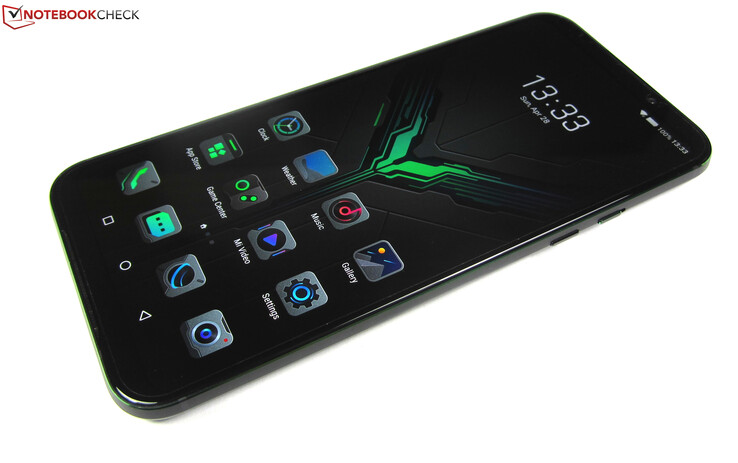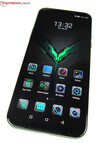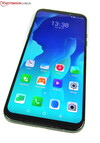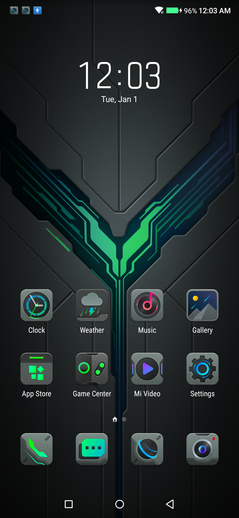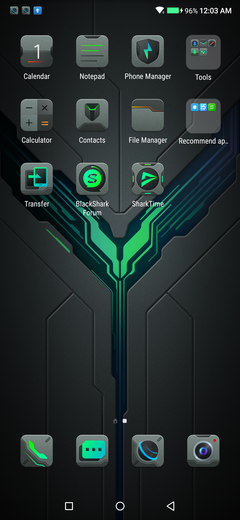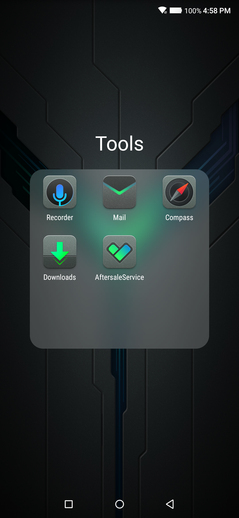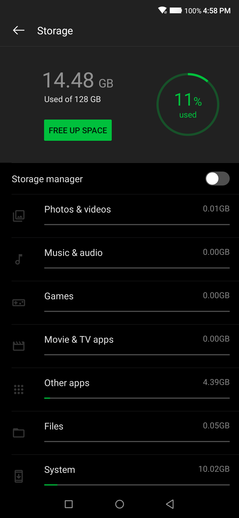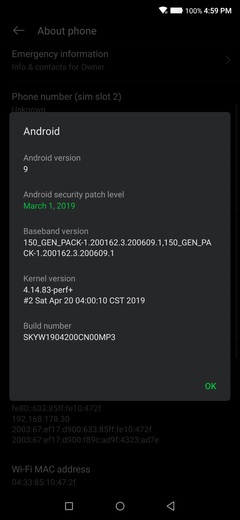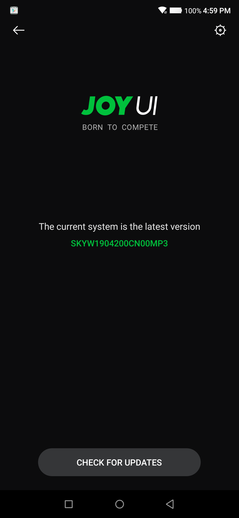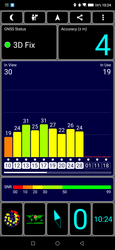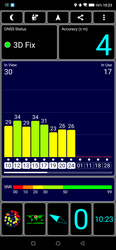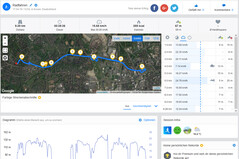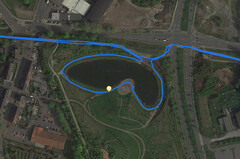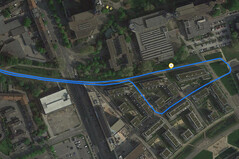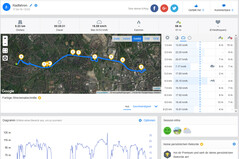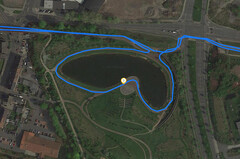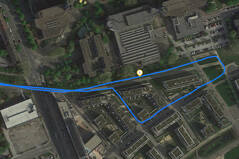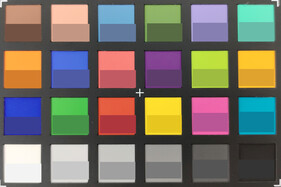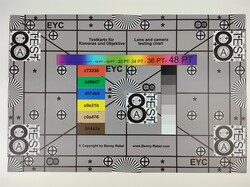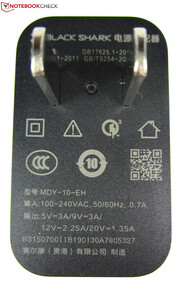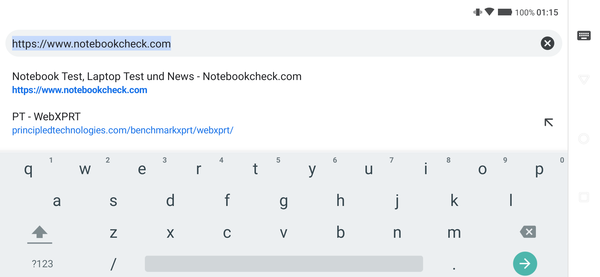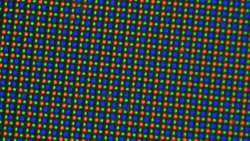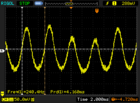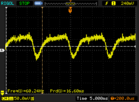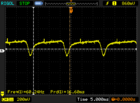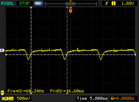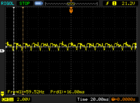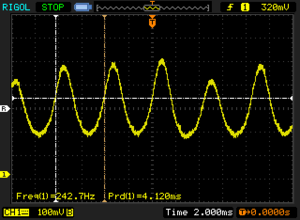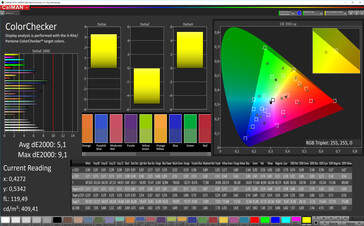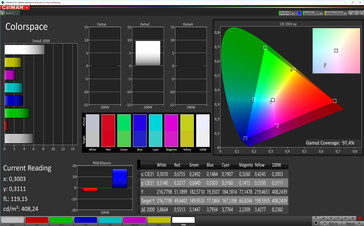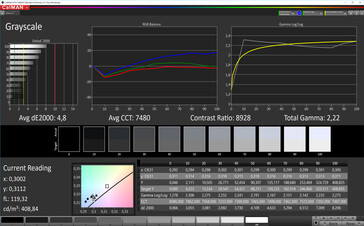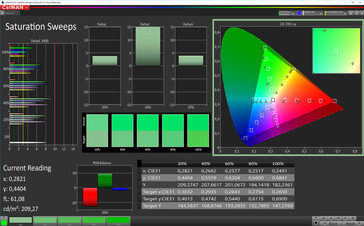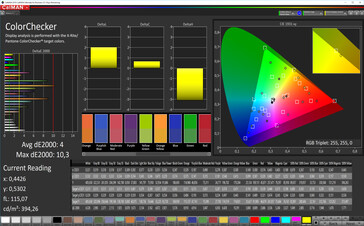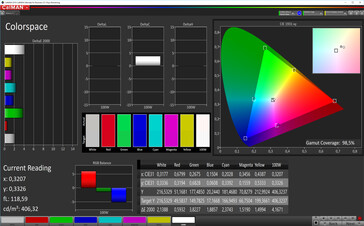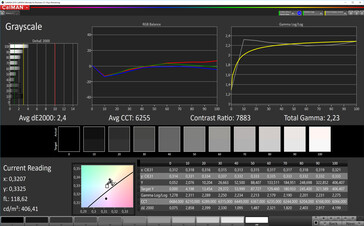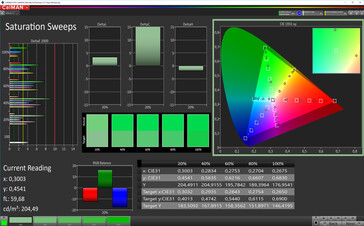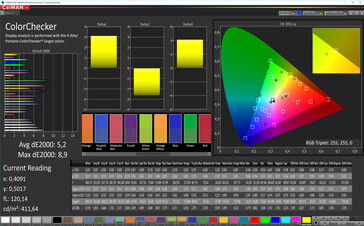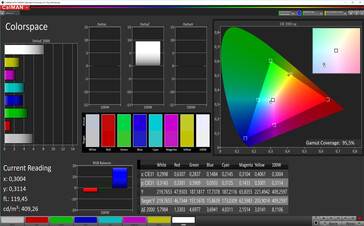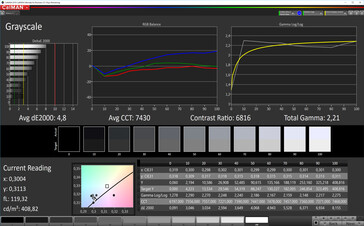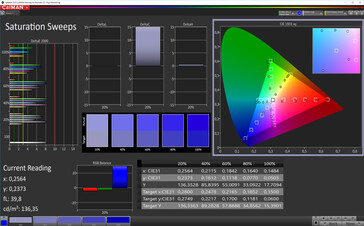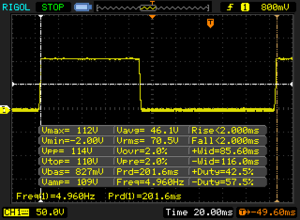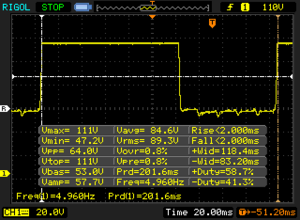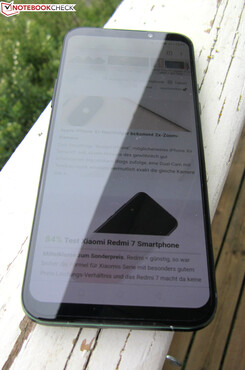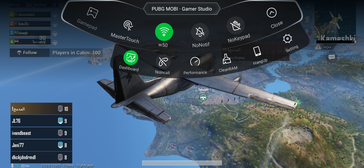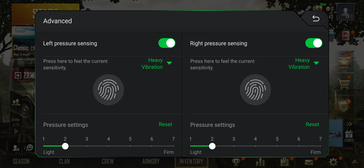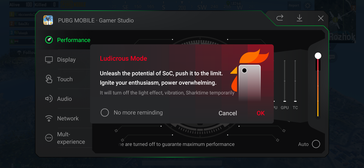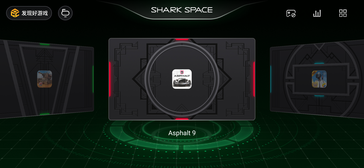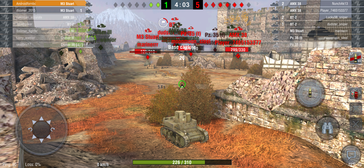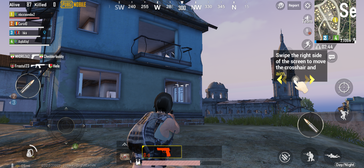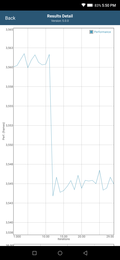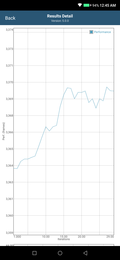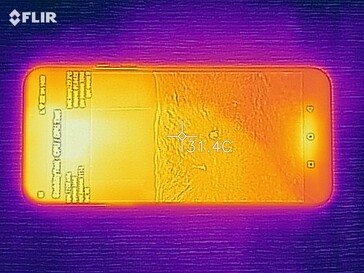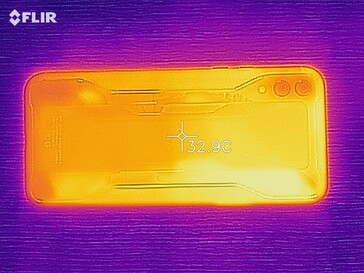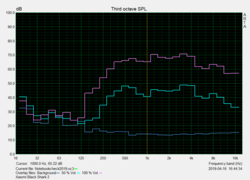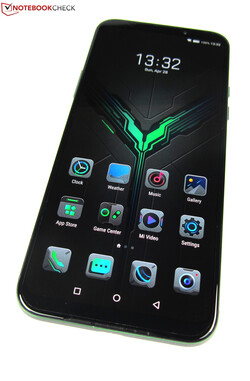Xiaomi Black Shark 2 Smartphone Review
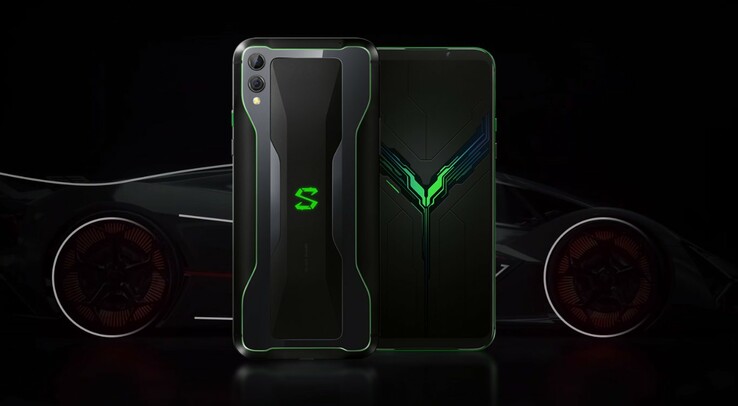
While the PC and console markets are saturated, mobile games show rapid growth - and this trend will increase in the coming years. No wonder that a particular product category of smartphones has been seeing an increase in popularity: Gaming smartphones.
Xiaomi has put on the market a notably powerful competitor: The Black Shark 2 wants to make gamers' hearts race with water cooling, a special gaming menu, the high-end Snapdragon 855 SoC, up to 12 (!) GB RAM and optional clip-on controllers. While it is at it, it also wants to outdo its predecessor, the Xiaomi Black Shark. Whether the gaming smartphone can succeed at this, we will find out in our review.
In order to determine how well the Black Shark 2 performs compared to other gaming smartphones, we will use the Xiaomi Black Shark, the Asus ROG Phone and the Razer Phone 2 as comparison devices. We will also compare its performance to other current high-end smartphones such as the Huawei P30 Pro, the Samsung Galaxy S10 and the Xiaomi Mi 9, which are equipped with the Snapdragon 855 as well.
Case - Very stable metal-glass chassis for the Xiaomi phone
According to Xiaomi, the design of the Black Shark 2 was inspired by sports cars. The 8.7-millimeter (~0.34 in) thick smartphone looks therefore a bit more eccentric than a standard smartphone. This is especially evident on its back side, which features a futuristic and aggressive look.
The frame and buttons on the Black Shark 2 are made of metal. The rear has some elements made of scratch-resistant glass that are slightly recessed. When holding the smartphone in landscape orientation, fingers rest naturally on the glass surface and find a good grip on the metallic elements. The glass structure also aids in keeping fingers cool when gaming.
Overall, the glass-metal body managed to impress with its great stability, and it didn't show any flexing under strong force during our review. This stability has its limits though, since the Black Shark 2 lacks an IP-certification.
Alongside our 8 GB version review unit, which comes in the "shadow black" color, Xiaomi also offers the Black Shark 2 in the "frozen silver" color, which is limited to the 12 GB variant. In all configurations, the frame is decorated with a metallic-green strip. The Shark-Space button on the right also shows a green accent. Likewise, there's also an illuminated RGB strip on either side of the handset. These can be configured to light up in sync with in-game effects or music, as well as with notifications, incoming calls or low battery. The third RGB element is the Black Shark logo on the rear, which normally glows in green.
Connectivity- Xiaomi Black Shark 2 with up to 12 GB RAM
Our review unit is the smaller variant of the Black Shark 2, which is configured with 8 GB LPDDR4x RAM and 128 GB UFS 2.1 storage. If that's not enough, there's also a bigger version available, which is equipped with 12 GB RAM and 256 GB storage, and is available in the Xiaomi Shop for 100 Euros (~$112). Due to a lack of a microSD card reader, the storage can't be expanded.
The USB-C port supports USB-OTG and turns into a 3.5mm audio jack through the included adapter. Alternatively, audio can also be transmitted via Bluetooth 5.0, whereby the Black Shark 2 can also handle aptX and aptX HD. The USB-C port isn't the fastest when it comes to transferring data since at best 40 MB/s was reached using the included cable.
Software - Global version comes with Google services
Xiaomi has put their own user interface on their Black Shark smartphones. It is called JoyUI and is based on MIUI, which is found on other Xiaomi smartphones. The former has a darker design, however, and offers some additional functions targeted at gamers.
The Black Shark 2 comes with Android 9 and is quite up-to-date regarding security patches: at the time of writing (beginning of May) these are at the level of March 1, 2019.
It's pretty evident that Xiaomi kept the Chinese market in sight first: The three apps found under the "Recommended apps" are only usable if you understand Chinese. The same goes for the "Music", "App Store", "Game Center" and "Mi Video" apps that are found on the main screen, which lead to Chinese media portals and can't be uninstalled, except for the Game Center. We also weren't able to use the "Weather" app properly since it responded to every location input with a network error message. On the other hand, there are a few preinstalled apps that come in English, which will be useful for European users: These include a support tool, a compass and an audio recorder.
Our Black Shark 2 review unit is missing the Google apps as well as the Google Play Store and a German language setting. Xiaomi has published a step-by-step guide in their forum, which explains how to install Google services. Our guide can be found here. There is a way to avoid this: The Xiaomi Black Shark 2 is also offered in a global version that comes preinstalled with the Google Play Store as well as German language settings, among others.
The Parental Control and Anti-Theft features found on the Black Shark are also available on the Black Shark 2. Parents can in this way limit the usage time of individual apps to a certain duration. Another practical feature for users is the "Open health tips" menu option, which shows a notification every 2 or 4 hours reminding you that it's time to take a break from gaming.
Communication and GPS - LTE band 20, accurate GPS in Xiaomi smartphone
The Xiaomi Black Shark 2 has Bluetooth 5.0 and supports alongside GSM (850, 900, 1800, 1900 MHz) and UMTS (850, 900, 1900, 2100 MHz) several LTE bands (band 1, 3, 4, 5, 7, 8, 20, 28, 34, 38, 39, 40, 41), including the important band 20. Xiaomi doesn't give any additional information on LTE speeds or SAR values. On the contrary, there are no questions regarding VoLTE and Dual-LTE since they can both be activated within the SIM card settings. The Black Shark 2 does not support NFC.
In local networks, the gaming smartphone works on 802.11a/b/g/n/ac Wi-Fi, and can transfer data through MU-MIMO pretty quickly. Using our Linksys EA8500 reference router, we measured 527 Mb/s for sending data, while 586 Mb/s were measured for receiving. Only the Razer Phone 2 is similarly fast among the other gaming smartphones, whereas the Asus ROG Phone and the Xiaomi Black Shark fall behind. However, the Black Shark 2 doesn't have such a stable Wi-Fi connection. Considerable fluctuations in speed were observed in both directions, with the transfer rate falling below the 300 Mb/s mark at times.
The Black Shark 2 determines its current position through GPS, GLONASS and BeiDou. According to the GPS Test app, it was able to determine its position quickly both indoors and outdoors, and also with an accuracy of 4 meters (~13 feet) respectively.
The smartphone passed our practical test too: during a 9-kilometer-long (~5.6 miles) bike ride it provided us with a location almost as precise as the one determined by the professional navigator Garmin Edge 500, which leads to a direct comparison.
Telephone and call quality
The Black Shark 2 allows the use of two Nano SIM cards that can simultaneously connect to 4G. This is also possible through VoLTE, provided you have a suitable contract with your carrier. The phone app has a bit of a different layout than the standard app on Android 9, but it comes with all usual features like the recent calls list, the dial button and the contacts.
Phone calls made with the Black Shark 2 impress with their good call quality. Both parties were able to listen to each other loud and clear through the ear piece and on speaker as well, whereby speaking quietly worked just as well. During our test calls, we could perceive an hissing noise in the background from time to time, but it was not bothersome.
Cameras - Surprisingly good for a gaming smartphone
The camera is certainly not the first item on the wish-list for gaming smartphones. Nonetheless, Xiaomi didn't neglect this aspect on the Black Shark 2, since it comes with a dual-camera setup, which produces very decent pictures under good lighting conditions.
Its talents aren't enough to let it join the smartphone camera big leagues though, but they still manage to significantly outdo other gaming smartphones like the Asus ROG Phone (scene 1 and 2). Weak lighting conditions as the one in scene 3 are evidently too much for the Xiaomi device and result in very blurry pictures.
The dual-camera consists of a main camera that has an LED flash, auto-focus with phase detection and a 48MP sensor, which produces 12MP pictures through Pixel Binning. The second camera features the same resolution, which is joined additionally by a 2x optical zoom. The webcam uses a 20MP sensor.
We took a better look at the camera under controlled lighting conditions. Here we tested color reproduction with the X-Rite ColorChecker Passport and the image sharpness with our test chart.
Colors are represented a bit too strongly by the Black Shark 2, but it handles grayscales accurately. The smartphone can represent the test chart up to the corners with sharpness, albeit with some noise, becoming slightly lighter in the lower half.
Accessories and warranty - Many choices in Xiaomi Shop
Our imported version came with a modular 27-watt power adapter (Quick Charge 3.0, 5V/3A, 9V/3A, 12V/2.25A, 20V/1.35A), a USB cable (Type-C to Type-A), a SIM tool, a clear case, an audio adapter (USB-C to 3.5mm jack) and a quick-start guide. When ordering the smartphone through our provider TradingShenzhen, a USB-OTG cable, as well as a European power plug adapter, are included in addition.
When buying the Black Shark 2 directly through the manufacturer, you'll also receive a European power plug adapter and a 24-month warranty on top of that, since the smartphone is being officially purchased in the European area. Independently, the seller warranty always applies if the seller belongs to the European area.
Xiaomi provides several accessories such as the Black Shark 2 Pro Kit, which costs about 90 Euros (~$101) and consists of a Kevlar case and two controllers. Furthermore, there's the Black Shark 2 Rookie Kit with a price of around 40 Euros (~$45), which comes with the controller corresponding to the left side of the smartphone. Gaming headphones (19.90 Euros, ~$22) and a USB-C to HDMI cable (39.90 Euros, ~$45) are also included in the accessories assortment.
Input devices and handling - Special game launcher for mobile gaming
The touchscreen on the Black Shark 2 reacts very precisely to inputs, which are registered equally quickly both on the edges of the display and on the center. This is important because swiping from a corner into the display can either bring up the music player or the Game Dock (while playing a game). The Game Dock is a kind of command center that presents all important settings for games in a strip of buttons.
The fingerprint scanner works as effortlessly as the display. This is found under the display and supports the registration of up to 5 finger prints. Other security features include face recognition or unlocking via a PIN, pattern or password.
Alongside the volume rocker and the power button, the Black Shark 2 also features, like the Black Shark that came before it, a third physical button in the form of a sliding switch, which is found on the right side of the phone. When it is slid to the left, the smartphone opens the Shark Space, a special game launcher. Sliding the switch to the right takes the user back to the Android user interface.
The standard keyboard used by the Black Shark 2 is Google's Gboard, which has a different name, but is in the end identical.
Display - Xiaomi Black Shark with AMOLED display and FHD+ resolution
The Xiaomi Black Shark 2 uses an AMOLED display that offers a screen size of 6.39 inches and a resolution of 2340 x 1080 pixels (HD+ with a 19.5:9 aspect ratio). This produces a screen density of 403 PPI, which results in a very sharp display. Xiaomi optimized the HDR-capable 60-Hz display for the DCI-P3 color-space, which has a 108.9% coverage according to the manufacturer – we measured a maximum of 98.5%, which is still a very good value.
With an average brightness of 411.9 cd/m², the Xiaomi Black Shark 2 doesn't belong to the brightest smartphones, but it scores points through its theoretically infinite contrast and a very even brightness distribution (95%). In addition, the display brightness increases to up to 518 cd/m² when there is an even distribution of dark and light image areas (APL50). Also good: The display doesn't strain the eyes when viewed in the dark thanks to its minimal brightness of 2.36 cd/m².
Due to the OLED display, Pulse-Width-Modulation is used for brightness control. As soon as the display is set below maximum brightness, the screen flickers at a frequency between 81 and 245 Hz. A range that could be bothersome to sensitive users. Xiaomi came up with something in this regard, namely an option that is quite hidden within the settings and is called "AMOLED low brightness flashing protection". This can be found within the display settings, in the sub-menu corresponding to color reproduction. This option should reduce flickering at lower brightness levels. We tested this mode more in depth and were still able to identify flickering that remained at a quite constant level of around 60 Hz. The amplitude becomes flatter with the increase of brightness. It's feasible to think that this mode will lead to fewer complaints due to its more even flickering, albeit at a lower frequency. The response time of the AMOLED display isn't impacted in a negative way by this.
| |||||||||||||||||||||||||
Brightness Distribution: 95 %
Center on Battery: 409 cd/m²
Contrast: ∞:1 (Black: 0 cd/m²)
ΔE ColorChecker Calman: 5.2 | ∀{0.5-29.43 Ø4.78}
ΔE Greyscale Calman: 4.8 | ∀{0.09-98 Ø5}
95.5% sRGB (Calman 2D)
Gamma: 2.21
CCT: 7430 K
| Xiaomi Black Shark 2 AMOLED, 2340x1080, 6.4" | Asus ROG Phone AMOLED, 2160x1080, 6" | Xiaomi Black Shark IPS, 2160x1080, 6" | Razer Phone 2 IGZO LCD, UltraMotion 120 Hz Display, 2560x1440, 5.7" | Samsung Galaxy S10 OLED, 3040x1440, 6.1" | Huawei P30 Pro OLED, 2340x1080, 6.5" | Xiaomi Mi 9 AMOLED, 2340x1080, 6.4" | |
|---|---|---|---|---|---|---|---|
| Screen | 3% | -2% | 26% | 38% | 46% | 53% | |
| Brightness middle (cd/m²) | 409 | 597 46% | 549 34% | 600 47% | 701 71% | 597 46% | 593 45% |
| Brightness (cd/m²) | 412 | 637 55% | 541 31% | 577 40% | 705 71% | 608 48% | 587 42% |
| Brightness Distribution (%) | 95 | 83 -13% | 95 0% | 92 -3% | 98 3% | 89 -6% | 94 -1% |
| Black Level * (cd/m²) | 0.42 | 0.31 | |||||
| Colorchecker dE 2000 * | 5.2 | 5.12 2% | 6.08 -17% | 3.43 34% | 3.7 29% | 2.2 58% | 0.9 83% |
| Colorchecker dE 2000 max. * | 8.9 | 10.9 -22% | 10.69 -20% | 6.36 29% | 10.3 -16% | 3.6 60% | 2 78% |
| Greyscale dE 2000 * | 4.8 | 7.3 -52% | 6.6 -38% | 4.4 8% | 1.4 71% | 1.6 67% | 1.5 69% |
| Gamma | 2.21 100% | 2.203 100% | 2.305 95% | 2.388 92% | 2.1 105% | 2.23 99% | 2.27 97% |
| CCT | 7430 87% | 7371 88% | 8399 77% | 6069 107% | 6553 99% | 6268 104% | 6548 99% |
| Contrast (:1) | 1307 | 1935 |
* ... smaller is better
Screen Flickering / PWM (Pulse-Width Modulation)
| Screen flickering / PWM detected | 242.7 Hz | ≤ 99 % brightness setting | |
The display backlight flickers at 242.7 Hz (worst case, e.g., utilizing PWM) Flickering detected at a brightness setting of 99 % and below. There should be no flickering or PWM above this brightness setting. The frequency of 242.7 Hz is relatively low, so sensitive users will likely notice flickering and experience eyestrain at the stated brightness setting and below. In comparison: 53 % of all tested devices do not use PWM to dim the display. If PWM was detected, an average of 8111 (minimum: 5 - maximum: 343500) Hz was measured. | |||
The Black Shark 2 offers several predefined display modes. These are the "Eye Care Mode" that filters blue light and protects the eyes through this, the factory preset "Cinema Mode", as well as the "Natural Mode" and the "Standard Mode". Additionally, the color temperature can be adjusted through a slider, and the True View mode can be activated. This adjusts colors according to the ambient light and should lead to a consistent image.
We measured the quality of color reproduction in Cinema Mode, Natural Mode and Standard Mode through our spectral photometer and the CalMAN software. The Standard Mode comes closest to the ideal values: The color temperature is good at 6255 K, as well as the grayscales (Delta-E 2.4) and color reproduction (Delta-E 4). On the contrary, there's a slight blue tint on the Cinema Mode and on the Natural Mode, but this shouldn't bother most users.
Display Response Times
| ↔ Response Time Black to White | ||
|---|---|---|
| 4 ms ... rise ↗ and fall ↘ combined | ↗ 2 ms rise | |
| ↘ 2 ms fall | ||
| The screen shows very fast response rates in our tests and should be very well suited for fast-paced gaming. In comparison, all tested devices range from 0.1 (minimum) to 240 (maximum) ms. » 15 % of all devices are better. This means that the measured response time is better than the average of all tested devices (20.2 ms). | ||
| ↔ Response Time 50% Grey to 80% Grey | ||
| 4 ms ... rise ↗ and fall ↘ combined | ↗ 2 ms rise | |
| ↘ 2 ms fall | ||
| The screen shows very fast response rates in our tests and should be very well suited for fast-paced gaming. In comparison, all tested devices range from 0.165 (minimum) to 636 (maximum) ms. » 14 % of all devices are better. This means that the measured response time is better than the average of all tested devices (31.6 ms). | ||
Compared to other high-end smartphones, the AMOLED display on the Xiaomi Black Shark 2 is a bit less bright, but it's still very good for outdoor use with up to 518 cd/m². This is also aided by the stable viewing angles found on the AMOLED panel, which only darkens when being viewed from extreme angles.
Performance - The Xiaomi is one of the fastest Android smartphones
The Xiaomi Black Shark 2 is the mobile equivalent of a high-end gaming PC. It features the Snapdragon 855, the latest flagship SoC from Qualcomm. The octa-core processor is manufactured using a 7 nm process technology and consists of a main core with a clock speed of up to 2.84 GHz, 3 performance cores with up to 2.42 GHz and 4 ARM Cortex-A55 cores with up to 1.8 GHz. The high-end Adreno 640 serves as graphics unit.
The Black Shark 2 keeps the SoC at low temperatures thanks to its passive liquid-cooling, which should theoretically allow it to perform better than smartphones with similar configurations. An ideal candidate for a direct comparison can be found in the Xiaomi Mi 9, which also features the Snapdragon 855, but only uses standard cooling.
The Black Shark 2 didn't manage to outdo the Xiaomi Mi 9 during our synthetic benchmarks. The gaming smartphone achieved partly better results - 11,359 points compared to 10,999 points in the Multi-Core test from Geekbench 4.3 - however, they are overall practically on par and count towards the current fastest Android smartphones. The results observed in AnTuTu v7 were outstanding: With 371,562 points, the Black Shark 2 together with the Mi 9 (374,820 points), left the competition significantly behind.
The synthetic benchmarks only show half of the truth, however, because with the load peaks only occurring for a short time, the Black Shark 2's elaborate cooling system can't show its strengths. It isn't until the smartphone undergoes prolonged load, that its advantages start to show. The differences are then all the more apparent: The Xiaomi Mi 9 reacts with strong throttling, while the Black Shark 2 handles the full load effortlessly and is able to keep performing at its full potential. Nonetheless, the throttling on the Mi 9 doesn't show any perceivable consequences - power is still abundantly available.
| Basemark GPU 1.1 | |
| 1920x1080 Vulkan Medium Offscreen (sort by value) | |
| Xiaomi Black Shark 2 | |
| Samsung Galaxy S10 | |
| Huawei P30 Pro | |
| Xiaomi Mi 9 | |
| Average Qualcomm Snapdragon 855 (24.5 - 36.3, n=3) | |
| Vulkan Medium Native (sort by value) | |
| Samsung Galaxy S10 | |
| Huawei P30 Pro | |
| Xiaomi Mi 9 | |
| Average Qualcomm Snapdragon 855 (22.7 - 32.2, n=2) | |
| 1920x1080 OpenGL Medium Offscreen (sort by value) | |
| Xiaomi Black Shark 2 | |
| Samsung Galaxy S10 | |
| Huawei P30 Pro | |
| Xiaomi Mi 9 | |
| Average Qualcomm Snapdragon 855 (33.1 - 37.4, n=3) | |
| VRMark - Amber Room (sort by value) | |
| Xiaomi Black Shark 2 | |
| Huawei P30 Pro | |
| Xiaomi Mi 9 | |
| Average Qualcomm Snapdragon 855 (4486 - 4969, n=3) | |
| Basemark ES 3.1 / Metal - offscreen Overall Score (sort by value) | |
| Xiaomi Black Shark 2 | |
| Samsung Galaxy S10 | |
| Huawei P30 Pro | |
| Xiaomi Mi 9 | |
| Average Qualcomm Snapdragon 855 (1075 - 1425, n=4) | |
| Average of class Smartphone (205 - 7731, n=36, last 2 years) | |
In our browser benchmarks, the Black Shark 2 was surprisingly weak since it came out last in all our tests, and was only able to beat its predecessor. This difference in performance was not noticeable in everyday use, however, because surfing the web felt markedly fast.
| Jetstream 2 - 2.0 Total Score | |
| Average of class Smartphone (23.8 - 387, n=153, last 2 years) | |
| Huawei P30 Pro (Chrome 73) | |
| Average Qualcomm Snapdragon 855 (45.5 - 67, n=16) | |
| Xiaomi Mi 9 (Chrome 73) | |
| Asus ROG Phone (Chrome 74) | |
| Xiaomi Black Shark 2 (Chrome 73.0.3683.90) | |
| Speedometer 2.0 - Result 2.0 | |
| Average of class Smartphone (15.2 - 643, n=126, last 2 years) | |
| Huawei P30 Pro (Chrome 73) | |
| Xiaomi Mi 9 (Chrome 73.0.3683.75) | |
| Average Qualcomm Snapdragon 855 (42.5 - 67.9, n=15) | |
| Asus ROG Phone (Chrome 74) | |
| Samsung Galaxy S10 (Samsung Browser 9.0) | |
| Xiaomi Black Shark 2 (Chrome 73.0.3683.90) | |
| WebXPRT 3 - Overall | |
| Average of class Smartphone (38 - 380, n=34, last 2 years) | |
| Huawei P30 Pro (Chrome 73) | |
| Xiaomi Mi 9 (Chrome 73.0.3683.75) | |
| Average Qualcomm Snapdragon 855 (90 - 129, n=20) | |
| Asus ROG Phone (Chrome 70) | |
| Razer Phone 2 (Chrome 68) | |
| Xiaomi Black Shark 2 (Chrome 73.0.3683.90) | |
| Xiaomi Black Shark (Firefox 61) | |
| Octane V2 - Total Score | |
| Average of class Smartphone (2228 - 121337, n=201, last 2 years) | |
| Xiaomi Mi 9 (Chrome 73.0.3683.75) | |
| Average Qualcomm Snapdragon 855 (17011 - 33918, n=21) | |
| Huawei P30 Pro (Chrome 73) | |
| Samsung Galaxy S10 (Samsung Browser 9.0) | |
| Asus ROG Phone (Chrome 70) | |
| Razer Phone 2 (Chrome 68) | |
| Xiaomi Black Shark 2 (Chrome 73.0.3683.90) | |
| Xiaomi Black Shark (Firefox 61) | |
| Mozilla Kraken 1.1 - Total | |
| Xiaomi Black Shark 2 (Chrome 73.0.3683.90) | |
| Xiaomi Black Shark (Firefox 61) | |
| Razer Phone 2 (Chrome 68) | |
| Asus ROG Phone (Chrome 70) | |
| Average Qualcomm Snapdragon 855 (1852 - 2611, n=19) | |
| Huawei P30 Pro (Chrome 73) | |
| Samsung Galaxy S10 (Samsung Browser 9.0) | |
| Xiaomi Mi 9 (Chrome 73.0.3683.75) | |
| Average of class Smartphone (257 - 28190, n=156, last 2 years) | |
* ... smaller is better
The Black Shark 2 is very quick at reading and writing data thanks to its UFS 2.1 storage, whereby the writing of small data blocks could be a bit faster. The smartphone can handle the loading of large data amounts pretty quickly though. The Black Shark 2 lacks a microSD slot.
| Xiaomi Black Shark 2 | Asus ROG Phone | Xiaomi Black Shark | Razer Phone 2 | Samsung Galaxy S10 | Huawei P30 Pro | Xiaomi Mi 9 | Average 128 GB UFS 2.1 Flash | Average of class Smartphone | |
|---|---|---|---|---|---|---|---|---|---|
| AndroBench 3-5 | 130% | 85% | -7% | -1% | 148% | 162% | 119% | 592% | |
| Sequential Read 256KB (MB/s) | 793 | 725 -9% | 742 -6% | 733 -8% | 832 5% | 849 7% | 666 -16% | 761 ? -4% | 2226 ? 181% |
| Sequential Write 256KB (MB/s) | 195.6 | 243.3 24% | 199.6 2% | 194.8 0% | 193.2 -1% | 250.8 28% | 388.3 99% | 296 ? 51% | 1848 ? 845% |
| Random Read 4KB (MB/s) | 145.2 | 141.6 -2% | 127.2 -12% | 124.3 -14% | 137.4 -5% | 174.4 20% | 149.4 3% | 154 ? 6% | 295 ? 103% |
| Random Write 4KB (MB/s) | 25 | 152 508% | 114.1 356% | 23.99 -4% | 24.44 -2% | 159.2 537% | 165.3 561% | 130.4 ? 422% | 335 ? 1240% |
Games - Smartphone gaming made easy
The Xiaomi Black Shark 2 is currently the fastest gaming smartphone. To begin with, because it is equipped with the Snapdragon 855 and the Adreno 640 graphics chip, which are top hardware and make it a bit faster compared to gaming competitors like the Asus ROG Phone, the Razer Phone 2 and naturally the Xiaomi Black Shark. Then there's also the combination of a special cooling system, the Game Dock and Shark Space, which improves the already strong performance of the Black Shark 2. In addition, special features like "Magic Press", which is also called "Master Touch" by Xiaomi, and – so Tesla – the "Ludicrous Mode".
The Game Dock provides different speed settings for games and appears when you swipe inward from any corner of the display while playing a game. The button strip offers access to, among others, a memory cleaner, a Do Not Disturb option and a dashboard, which shows the current frame rate. Additionally, a Game HDR setting is to be found, alongside settings for the Magic Press pressure sensitivity system.
Magic Press is technically similar to Apple 3D Touch, but it has some more tricks up its sleeve. In this way, different in-game actions occur depending on the amount of pressure used. Furthermore, players can customize Magic Press functions for both the right and left sides of the display, and on top of that, they can configure pressure sensitivity too. The display reacts remarkably fast to inputs – Xiaomi reports a 43.5ms response time. We didn't perceive any lag in the display's responsiveness.
Another exciting feature is Ludicrous Mode, which can be activated by tapping a game title within the Game Dock. The Black Shark 2 then diverts the maximum of system resources to the respective game and turns off RGB lighting as well as vibration effects.
Ludicrous Mode is not really necessary though, since the system monitor, which is also a part of the Game Dock, always showed the same magnificent behavior during our Gamebench tests: The Black Shark 2 tackles every current Android game without any issues at all, and it only needs a fraction of its system performance to do this. Provided the game allows it, it runs at 60 FPS, the maximum allowed by the 60-Hz panel on the Black Shark 2. PUBG Mobile should have run at 40 FPS, but it was limited to 30 FPS, but this didn't slow down the fun in any way.
Ludicrous Mode can also be activated when the sliding switch on the right side of the smartphone is slid to the left. The Black Shark then closes all background apps, clears memory and switches into Shark Space, a kind of game launcher. If you add your installed games to it, Shark Space will present them in a gallery along with game statistics such as play times and data usage, among others.
All the games we installed for our review (Asphalt 9: Legends, PUBG Mobile, Subway Surfers and World of Tanks Blitz) were able to be added to Shark Space without issues, as well as launched from here. On the contrary, the Android buttons don't work within Shark Space. They can be used again as soon as the sliding switch is slid to the right in order to go back to the "normal" Android system.
The full gaming package also includes hardware extras: Xiaomi also offers game controllers on their online shop, which can be attached to the right and left side of the Black Shark 2 respectively and cost between 39.90 Euros (~$45) and 89.90 Euros (~$101). Unfortunately, they weren't available to us for this review.
PUBG Mobile
World of Tanks Blitz
Subway Surfers
Emissions - Remains very cool, no throttling
Temperature
In order to maintain a constant frame rate even during long gaming sessions, the Xiaomi Black Shark 2 features a liquid-cooling system named Liquid Cooling 3.0, which is a mix of special heat pipes and passive liquid-cooling. The Xiaomi Black Shark used the same concept to keep the temperatures of its SoC in check, which should be of up to 8 °C (~ 14.4 °F) lower than on smartphones with the same SoC and standard cooling. The Black Shark 2 steps it up a notch here, since its Liquid Cooling 3.0 system is now supposed to lower the processor temperature by up to 14 °C (~ 25.2 °F).
In our review, this cooling was outstanding and seemed to be much more mature than in the Black Shark. While the predecessor reached up to 49.5 °C (~ 121 °F) under load, the case temperature on the Black Shark 2 only reached 31.1 °C (~ 88 °F), even after a one-hour stress test, and stayed, on average, below the 30 °C mark (~ 86 °F). This resulted in the smartphone always remaining comfortable to hold.
Finally we used the GFXBench tool to test whether the Liquid Cooling 3.0 system on the Black Shark 2 worked as efficiently as promised by the manufacturer. As you can see, Xiaomi kept their word since there is no throttling to be found: the frame rate remained constant throughout the 30 runs of the less graphically intensive T-Rex test, as well as during the more demanding Manhattan test. The Xiaomi Black Shark 2 can always use its SoC at its full performance potential.
(+) The maximum temperature on the upper side is 31.1 °C / 88 F, compared to the average of 35.2 °C / 95 F, ranging from 21.9 to 247 °C for the class Smartphone.
(+) The bottom heats up to a maximum of 30.1 °C / 86 F, compared to the average of 34 °C / 93 F
(+) In idle usage, the average temperature for the upper side is 27.6 °C / 82 F, compared to the device average of 32.9 °C / 91 F.
Speakers
The stereo speakers in the Xiaomi Black Shark 2 accompany the events on the display with very loud sound. This can reach up to 79.4 dB(A) and sounds pleasing primarily due to its balanced mids and highs.
Low notes are scarce on standard settings. However, these can be significantly improved when turning on the "speaker bass enhancement" option in the audio settings. But this results in the sound becoming very dull. Thanks to the support of aptX HD, sound quality is considerably better on Bluetooth.
Xiaomi Black Shark 2 audio analysis
(±) | speaker loudness is average but good (79.4 dB)
Bass 100 - 315 Hz
(-) | nearly no bass - on average 21.1% lower than median
(±) | linearity of bass is average (14.4% delta to prev. frequency)
Mids 400 - 2000 Hz
(+) | balanced mids - only 3.7% away from median
(+) | mids are linear (4.5% delta to prev. frequency)
Highs 2 - 16 kHz
(+) | balanced highs - only 3.5% away from median
(+) | highs are linear (5.2% delta to prev. frequency)
Overall 100 - 16.000 Hz
(±) | linearity of overall sound is average (18.7% difference to median)
Compared to same class
» 21% of all tested devices in this class were better, 9% similar, 69% worse
» The best had a delta of 11%, average was 35%, worst was 134%
Compared to all devices tested
» 42% of all tested devices were better, 8% similar, 51% worse
» The best had a delta of 4%, average was 24%, worst was 134%
Asus ROG Phone audio analysis
(±) | speaker loudness is average but good (79.6 dB)
Bass 100 - 315 Hz
(-) | nearly no bass - on average 21.4% lower than median
(±) | linearity of bass is average (10.6% delta to prev. frequency)
Mids 400 - 2000 Hz
(+) | balanced mids - only 3.6% away from median
(+) | mids are linear (6.2% delta to prev. frequency)
Highs 2 - 16 kHz
(+) | balanced highs - only 4.2% away from median
(+) | highs are linear (4.8% delta to prev. frequency)
Overall 100 - 16.000 Hz
(±) | linearity of overall sound is average (19.8% difference to median)
Compared to same class
» 31% of all tested devices in this class were better, 8% similar, 61% worse
» The best had a delta of 11%, average was 35%, worst was 134%
Compared to all devices tested
» 49% of all tested devices were better, 7% similar, 43% worse
» The best had a delta of 4%, average was 24%, worst was 134%
Battery life - Average despite 4000 mAh battery
Energy consumption
Xiaomi has included a 4000 mAh battery in the Black Shark 2, a capacity that is also found on the Asus ROG Phone, Razer Phone 2 and Xiaomi Black Shark gaming smartphones. Contrary to these phones, the Black Shark 2 has a slightly lower energy requirement, which levels off under load at an average of 3.64 watts and reaches a maximum of only 8.86 watts. The Xiaomi Black Shark performs particularly worse in this comparison since it requires over 40% more energy than its successor.
| Off / Standby | |
| Idle | |
| Load |
|
Key:
min: | |
| Xiaomi Black Shark 2 4000 mAh | Asus ROG Phone 4000 mAh | Xiaomi Black Shark 4000 mAh | Razer Phone 2 4000 mAh | Samsung Galaxy S10 3400 mAh | Huawei P30 Pro 4200 mAh | Xiaomi Mi 9 3300 mAh | Average Qualcomm Snapdragon 855 | Average of class Smartphone | |
|---|---|---|---|---|---|---|---|---|---|
| Power Consumption | -19% | -42% | -60% | -18% | -55% | -8% | -33% | -44% | |
| Idle Minimum * (Watt) | 0.73 | 0.6 18% | 0.8 -10% | 0.6 18% | 0.61 16% | 0.68 7% | 0.67 8% | 0.939 ? -29% | 0.848 ? -16% |
| Idle Average * (Watt) | 1.01 | 1.4 -39% | 1.5 -49% | 1.5 -49% | 1.27 -26% | 2.6 -157% | 1.26 -25% | 1.506 ? -49% | 1.434 ? -42% |
| Idle Maximum * (Watt) | 1.13 | 1.7 -50% | 2.3 -104% | 2.6 -130% | 1.3 -15% | 2.77 -145% | 1.29 -14% | 1.799 ? -59% | 1.618 ? -43% |
| Load Average * (Watt) | 3.64 | 3.8 -4% | 4.8 -32% | 7.2 -98% | 6.17 -70% | 3.74 -3% | 3.71 -2% | 4.61 ? -27% | 7.01 ? -93% |
| Load Maximum * (Watt) | 8.86 | 10.6 -20% | 10.1 -14% | 12.3 -39% | 8.55 3% | 6.82 23% | 9.3 -5% | 9.04 ? -2% | 11.3 ? -28% |
* ... smaller is better
Battery run time
The low energy requirement in the Xiaomi Black Shark 2 is of help in practice since it leads to decent, albeit not great, battery life. For a day of intensive use, however, it will likely provide more than enough power.
In detail: The display went dark after 12:54 hours during our practical Wi-Fi test (programatically accessing a website every 30 seconds with brightness set at 150 cd/m²). When playing an H.264 video, however, it lasted 11:06 hours. The Asus ROG Phone and the Razer Phone 2 were on par with the Black Shark 2, which had to deal in turn with the Xiaomi Black Shark and the Xiaomi Mi 9. Only the Huawei P30 Pro was able to fully satisfy in terms of battery life.
The Black Shark 2 gets charged quickly. In our review it only took 1:15 hours for it to be fully charged using the included 27-watt charger. Unfortunately, the smartphone can't be charged wirelessly.
| Xiaomi Black Shark 2 4000 mAh | Asus ROG Phone 4000 mAh | Xiaomi Black Shark 4000 mAh | Razer Phone 2 4000 mAh | Samsung Galaxy S10 3400 mAh | Huawei P30 Pro 4200 mAh | Xiaomi Mi 9 3300 mAh | |
|---|---|---|---|---|---|---|---|
| Battery runtime | -6% | 19% | 5% | -8% | 53% | 15% | |
| Reader / Idle (h) | 15.9 | 18.5 16% | 29.2 84% | 27.2 71% | 21 32% | 32.8 106% | 27.5 73% |
| H.264 (h) | 11.1 | 13.3 20% | 12.5 13% | 12.4 12% | 14 26% | 19.9 79% | 16.8 51% |
| WiFi v1.3 (h) | 12.9 | 8.9 -31% | 11.9 -8% | 8.9 -31% | 7.1 -45% | 14 9% | 9.1 -29% |
| Load (h) | 4.9 | 3.6 -27% | 4.2 -14% | 3.4 -31% | 2.8 -43% | 5.7 16% | 3.2 -35% |
Pros
Cons
Verdict - The current best choice for gamers
The Xiaomi Black Shark 2 is a must for gamers: It is currently the fastest gaming smartphone that one can get, and it delivers such great performance that it can run any current Android game effortlessly at 60 FPS, even on maximum graphics settings. Higher frame rates aren't possible because the OLED display on the Black Shark 2 only supports up to 60 Hz.
Alongside the lighting-fast SoC, games also benefit from Xiaomi's passive liquid-cooling, which makes it possible for the smartphone to perform to its full potential even on long gaming sessions, while also remaining comfortable to hold.
If you're looking for a gaming smartphone, the Xiaomi Black Shark 2 is currently the best choice.
The optionally purchasable controllers, as well as the Shark Space gaming menu, are neat extras. Shark Space allows you to activate Ludicrous Mode, which is a kind of afterburner for games – it is currently not necessary though because there isn't a single thing that suffers from stuttering. Gamers will already be well-served with the 8 GB/ 128 GB variant, which is officially priced at 549 Euros (~$617). – however, for only 100 Euros (~$112) more, a model with 12 GB RAM and 256 GB storage is also available.
When buying the global version of the Xiaomi Black Shark 2, you will receive Android 9 also in German and with the Google apps already preinstalled. But nothing can be done about the missing microSD slot and the fact that a 3.5mm audio jack is only available through a USB-C adapter.
Xiaomi Black Shark 2
- 05/06/2019 v6 (old)
Manuel Masiero




